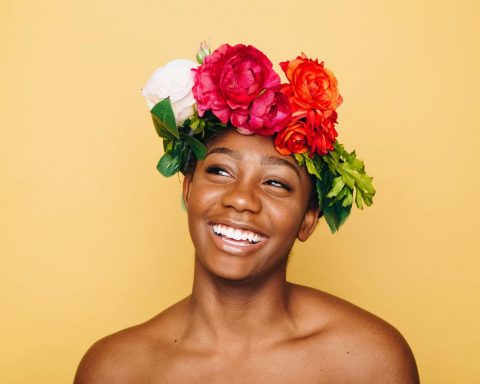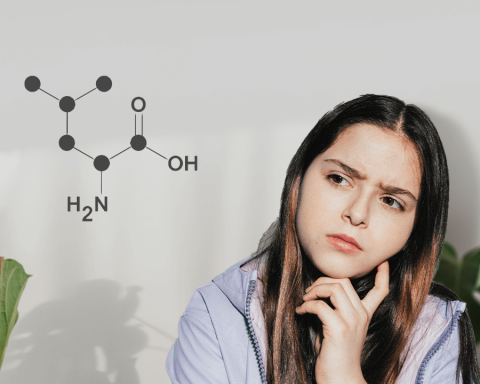Many people confuse Retinol with Retinoids due to their use and the compounds they contain. While the two are related, they’re not the same thing.
Both formulas are used as treatments in anti-aging procedures, but the main differentiating factor is as mentioned below:
Retinoids: A more powerful prescription drug.
Retinol: A weaker OTC (over-the-counter) formula.
They both provide essential benefits to the skin because they are less drying. If used in the right amounts and with proper combinations, they can do wonders for your skin. Let us see in detail what these two do and how they are different from each other:
Retinoids
Retinoids are an element that is derived from vitamin A and can benefit your skin by treating signs of aging, acne, pigmentation, and fine lines. Retinoids accelerate cell growth and cell division in your skin, which helps the dermis shed dead skin cells.
With time, your skin starts aging due to slower skin cell growth. By speeding up the cell growth in the skin, retinoids give your skin a new layer, which makes most of your skin issues disappear.
Skin proteins that leave your skin over the course of time include compounds like collagen and elastin. Retinoids work deep in the dermis layer of the skin to produce and stimulate the proteins elastin and collagen. These two proteins are the main reason your skin looks supple and youthful.
An added benefit of retinoids is that they remove bacteria from the skin by unclogging the pores. This, in turn, reduces inflammation and shedding of skin, which is associated with psoriasis.
Retinoids are powerful agents and can only be purchased through a prescription. They even come in the form of topical gels and creams that you can directly apply to the skin.
Retinol
Retinol is a derivative of retinoids. Retinol is related to retinoid and is a classification of the former. However, it is a weaker form of the compound.
Retinol is also used for skin issues such as pigmentation, aging, and fine lines. The only problem here is that retinol is not as effective and fast as retinoids. You can use retinol on the skin for mild complications such as early signs of aging, fine lines, and hyper pigmnntation.
A benefit of retinol is that you can purchase it from any drug store, pharmacy, or hospital without any prescription because it is not as potent. It also does not cause as many side effects due to its milder nature. With retinol, your skin may show signs of improvement at a slower rate, but you can rest assured that the effects will last longer.
When to Use Each
Retinoids and retinol fight the same issues more or less but greatly differ due to the components they are made up of and their effects on your skin. Before using any of the two, it is strongly recommended to consult your dermatologist so you can save your skin from any possible side effects.
Plus, they will also guide you on your skin type and which products will work best for your skin. After all, you never want to damage your skin by using something with a strong and harsh effect. Following is a list of issues that you can use both retinoids and retinol for:
Retinoids
Since retinoids are a stronger product, you can carefully use them to address the following skin issues:
- Psoriasis. Topical and oral use of retinoids can help slow the growth rate of excess cells in your skin, which causes redness and inflammation.
- Pigmentation. Reviews show that retinoids can effectively work for pigmentation, which causes black patches on the skin. It also helps fight skin diseases like actinic lentigines and melasma.
- Acne. Clogged pores in our skin cause bad bacteria to enter our skin through various holes, which leads to acne. Retinoids can help unclog your pores, which helps fight and prevent acne.
- Skin Cancer. Retinoids are also responsible for reducing the risk of certain types of skin cancer, such as Kaposi’s sarcoma and T-cell lymphoma.
Retinol
Retinol, on the other hand, due to its milder effect on the skin, is prescribed to be used for smaller issues but still has the potential to fight a lot of concerns related to skin, such as:
- Skin protection. The epidermis is the outer layer of your skin that protects the skin from sun rays, pollution, and bacteria. Retinol is an active element that strengthens and thickens your epidermis layer protecting your skin.
- Scars and pores. Retinol is helpful in reducing the pores and acne scars on your face making your skin look clearer and brighter than before.
- Skin texture. Retinol is helpful in smoothing our uneven and rough skin texture and color because of the effect it provides on collagen and elastin.
- Keratosis pilaris. Keratosis pilaris makes our skin bumpy, rough, and uneven. Retinol helps treat this condition on your skin.

How to Use Each
Here is a complete step-by-step guide for you to understand how you can use retinoids and retinol in your skincare routine by adding them as your cream or serum.
Retinoid
Due to its effects, you can’t use retinoids on your own, let alone add them to creams and serums. You can speak to your dermatologists on how to use it, and if they prescribe and allow you, you may be allowed to use a pea-sized amount of retinoids on your skin after thoroughly washing it with water.
Retinoids can be bought and purchased in the form of creams, pills, or serums but only upon presenting a prescription.
Retinol
You can use retinol following the given steps:
- Wash your face with a face wash.
- Let you dry completely in order to avoid your skin absorbing any excess retinol.
- Apply pea-sized retinol to your fingertips.
- Apply it to your cheeks, chin, and forehead.
- Rub it gently in a circular motion.
- Apply a moisturizer at the end.
Things you cannot use with Retinol and Retinoids
Given the side effects it can cause to some skin types, you should be very careful not to use retinol and retinoids with the following products and elements:
Benzoyl peroxide
Benzoyl peroxide performs the same function as retinol and retinoids. A combination of benzoyl peroxide and retinoids can cause extreme dryness, taking away any benefit of the above-mentioned products.
Exfoliators
Retinoids improve the skin by exfoliating it. Skin is one surface that doesn’t need extra exfoliation. If you’re using anything with an exfoliator in it and apply retinoids on top, your skin will feel raw and tender, which can do more harm to your skin. BHA and AHA are two main exfoliators that you need to avoid.
Toners, Astringents, and Drying Agents
As retinoids already dry your skin, you definitely do not need any more drying agents to deprive your skin of any kind of moisture. Consider rich and creamy toners and moisturizers if you have to use one.
Tips to Use Retinol and Retinoids in your Skincare Routine
Voibon Tips:
- Do not just use it on your face, but on your neck and chin as well.
- Use retinol and retinoids only at night because they are sensitive to sun rays.
- If your skin is allergic to harsh products, be very careful when using them. Stop using it immediately if you experience any mild irritation, redness, or dryness caused by retinol and retinoids.
- Start using it with a fewer amount of the product and then increase the usage slowly and gradually.
- If you want to use retinol and retinoids, it is best to use them when your skin is young and fresh. Older skin is more prone to side effects and weaker effects.
We hope this guide was helpful for you to differentiate the two and also about how to use them effectively for your skin.
Reference:







Howdy excellent website! Does running a blog similar to this take a lot of work?
I’ve absolutely no knowledge of computer programming but I had been hoping to start my own blog soon. Anyways,
if you have any suggestions or tips for new blog owners
please share. I know this is off subject however I simply had to ask.
Thank you!
Hey very cool website!! Guy .. Excellent .. Wonderful ..
I’ll bookmark your website and take the feeds additionally?
I am happy to seek out so many helpful information right here in the publish, we want develop more
strategies on this regard, thanks for sharing.
. . . . .
Hey there! Do you use Twitter? I’d like to follow you if that would be ok.
I’m absolutely enjoying your blog and look forward to new posts.
hi there, please find us on twitter:https://twitter.com/Voibonskincare
You ought to be a part of a contest for one of the finest blogs on the internet.
I am going to highly recommend this blog!
Thank you for your feedback, we really appreciated it! Hope you come back and read more, we update our post weekly.
Thank you so much for your kind comment! It means a lot to us.
We would love to talk about a link trade arrangement with you, please let us know how we can reach you.
You are so awesome! I do not suppose I have read anything like this before.
So nice to find another person with a few genuine thoughts on this
subject. Really.. many thanks for starting this up.
This site is one thing that’s needed on the web, someone with a bit
of originality!